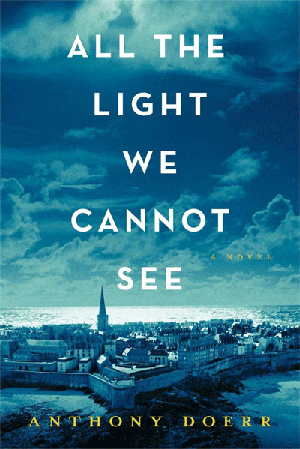

You can brighten your descriptions by giving details recognized by the senses other than the most-common “sight.” One of the best ways to practice that is to describe the world as if you were blind.
From All the Light we Cannot See, by Anthony Doerr:
The world pivots and rumbles. Crows shout, brakes hiss, someone to her left bangs something metal with what might be a hammer. She shuffles forward until the tip of her cane floats in space. The edge of a curb? A pond, a staircase, a cliff? She turns ninety degrees. Three steps forward. Now her cane finds the base of a wall. “Papa?”
What we might write in improvement:
DHer world pivots and rumbles. Crows shout. Brakes hiss. Someone to her left bangs something metal, maybe a hammer. She shuffles forward until the tip of her cane floats in space. The edge of a curb? Not a rock near a pond, for there is no smell of water. Steps, perhaps—or maybe a cliff. She turns ninety degrees to the right. Three steps forward. Now her cane finds the base of a wall. “Papa?”
Here’s the reasoning behind some of the changes:
- The blind girl’s world isn’t “the world,” it’s “her” We make the world more personal by using “her” instead of “the.”
- Separating the observations of the second sentence into three separate sentences gives each one a stronger focus.
- She hears the banging of something metal. “With what might be a hammer” is grammatically correct, descriptive telling. We can get to the interpretation of the sound more quickly if we use fewer words: “maybe a hammer.”
- Her shuffling feet and the floating cane tip are beautiful pictures of the blind girl’s world.
- The possibility of a pond is absurd. Her smell of the water or the lack of that smell would tell her which it was. Better: “Not a rock near a pond, for there is no smell of water.”
- With a cane, she might sense steps, but a “staircase” goes beyond what she can know.
- If they aren’t steps, they could go the other way—down. So the idea of a cliff works well as long as we have “steps” and not “staircase.” Better: “Steps, perhaps—or a cliff.”
- She heard a banging to her left, so her ninety-degree turn is either toward or away from that sound. Besides “she turns ninety degrees” we need “to the right,” which is a subtle suggestion that this was the “right” direction.




 Character is a critical key to becoming a person of quality, and it starts in the home!
Character is a critical key to becoming a person of quality, and it starts in the home!